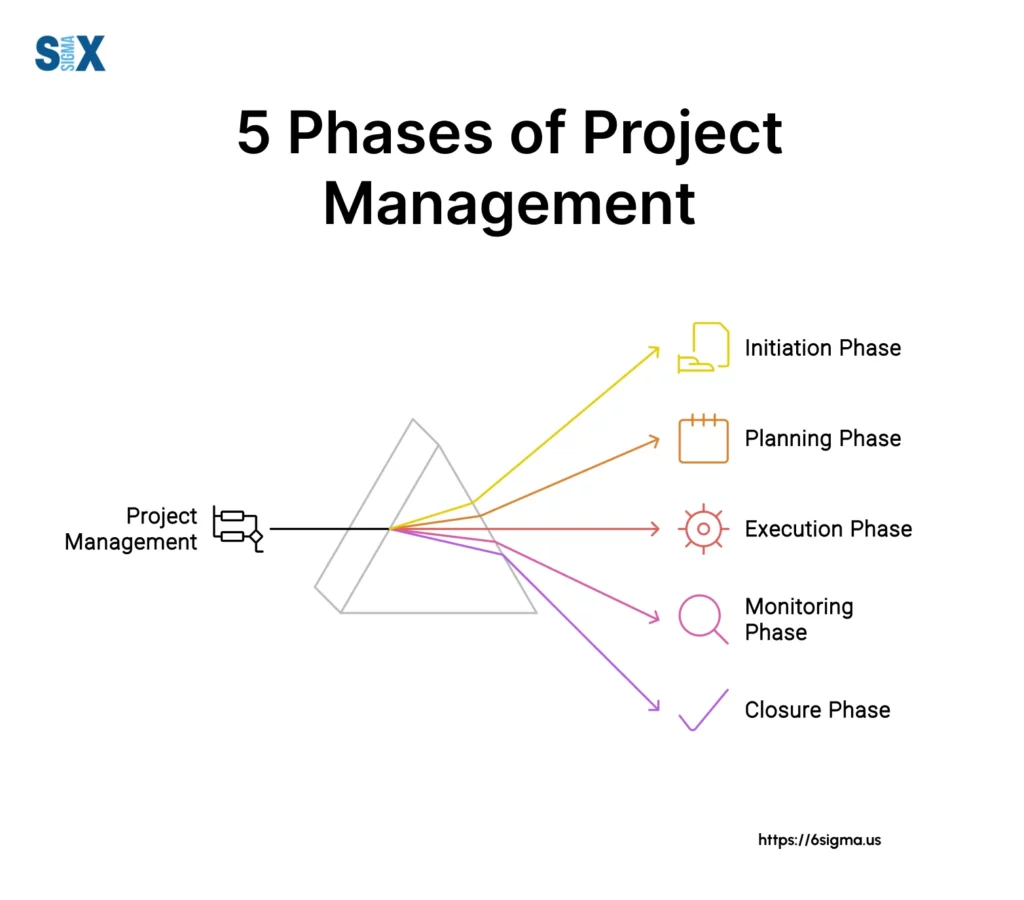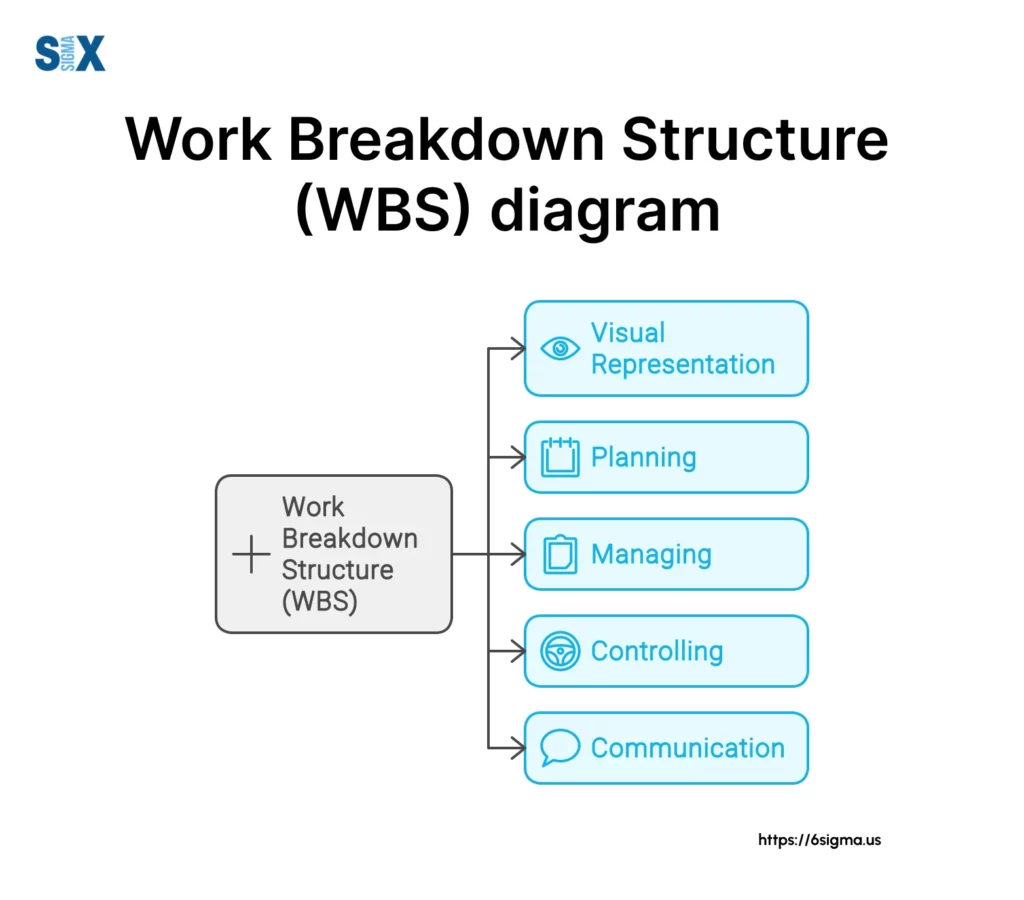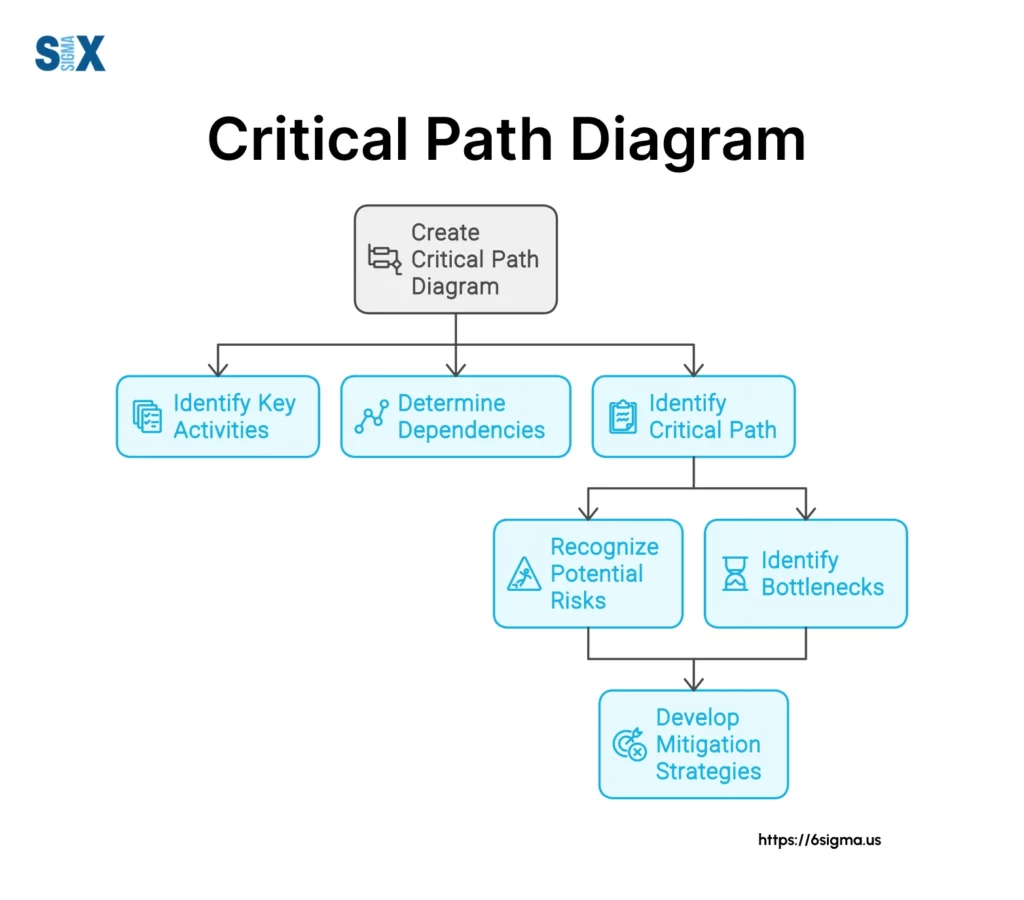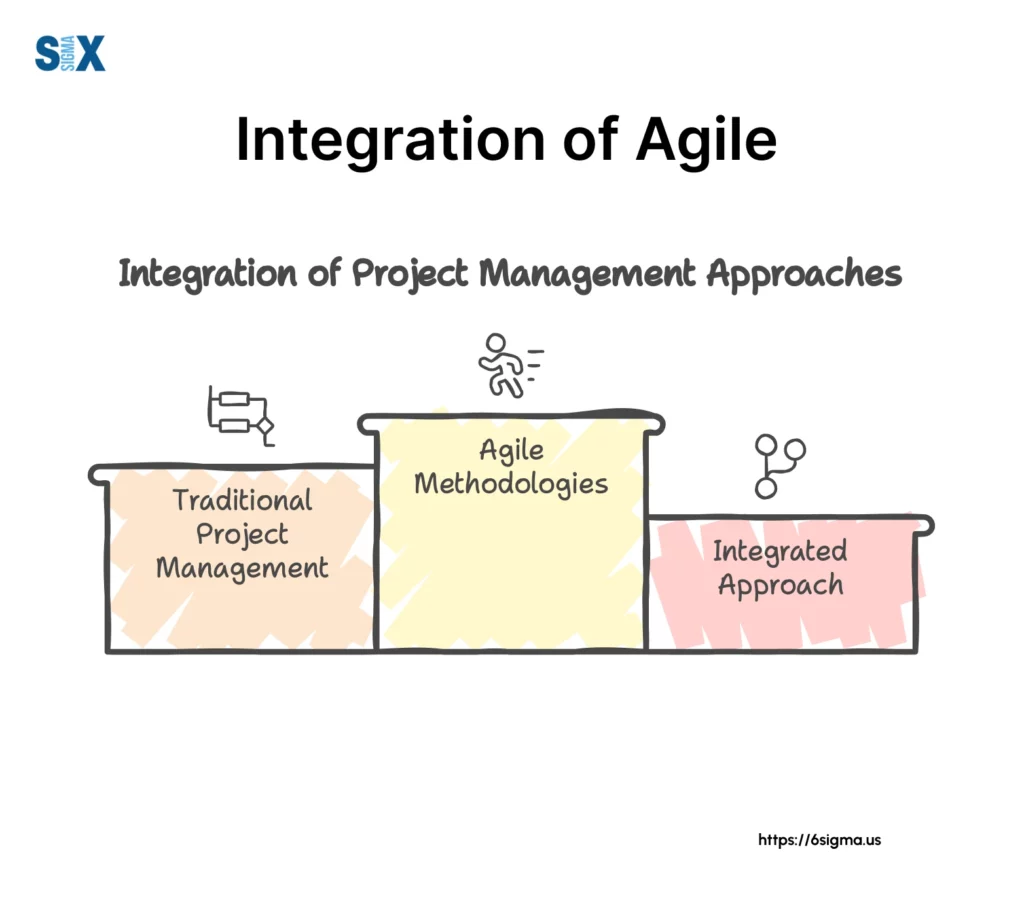Understand the 5 Phases of Project Management
The 5 phases of project management, as outlined in the Project Management Body of Knowledge (PMBOK) Guide, serve as the cornerstone for successful project delivery across industries.
These phases of project management – Initiation, Planning, Execution, Monitoring and Control, and Closure – provide a comprehensive framework that guides projects from conception to completion.
Key Highlights
- PMBOK Guide defines 5 phases of project management
- Project Initiation sets foundation for project success
- Comprehensive planning crucial for resource management
- Execution phase brings project plans to life
- Monitoring and Control ensures project stays on track
- Project Closure formalizes completion and captures learnings
- Integrating Agile methodologies enhances traditional project management
Introduction to the Project Management Lifecycle
The Project Management Body of Knowledge (PMBOK) guide in shaping successful project outcomes.
The PMBOK Guide, published by the Project Management Institute (PMI), serves as the gold standard for project management practitioners worldwide. It is a practical toolkit that empowers project managers to deliver consistent results across diverse industries and project types, often enhanced by specialized process improvement skills gained through a six sigma certification.
It outlines a comprehensive framework that encompasses the 5 phases of project management, providing a structured approach to navigating the complexities of modern projects.
In my work with companies like 3M, Dell, and Intel, I’ve seen firsthand how adhering to these principles can dramatically improve project success rates.
The PMBOK Guide isn’t just a theoretical construct; it’s a practical toolkit that empowers project managers to deliver consistent results across diverse industries and project types.
Importance of a Structured Approach in Project Management
A structured approach to project management is not just beneficial; it’s essential in today’s fast-paced business environment.
Throughout my career, I’ve observed that projects lacking a clear framework often fall victim to scope creep, budget overruns, and missed deadlines.
The 5 phases of project management provide a roadmap that guides teams from project conception to completion, ensuring that no critical steps are overlooked.
This structured approach also facilitates better communication among stakeholders, a crucial factor I’ve emphasized in my workshops on Statistical Thinking and Business Process Charting.
By breaking down the project lifecycle into distinct phases, we create natural checkpoints for review and alignment, reducing the risk of misunderstandings and enhancing overall project transparency.

Phase 1: Project Initiation
The project initiation phase sets the foundation for project success, and at its core is the development of the project charter.
This crucial document outlines the project’s purpose, objectives, and high-level requirements.
In my experience working with global teams at companies like Motorola and Xerox, I’ve found that a well-crafted project charter serves as a north star, guiding decision-making throughout the project lifecycle.
The charter should clearly articulate the business case for the project, identify key stakeholders, and provide a preliminary scope statement.
It’s not just a formality; it’s a powerful tool for aligning expectations and securing buy-in from senior management.
Identifying Key Stakeholders
Stakeholder identification is a critical component of the initiation phase that often doesn’t receive the attention it deserves.
In my Six Sigma deployment strategies, which align closely with Six Sigma certification methodologies, I always emphasize the importance of casting a wide net when identifying stakeholders.
This includes not just the obvious players like project sponsors and team members, but also indirect stakeholders who may be impacted by the project’s outcomes.
Creating a comprehensive stakeholder register early in the project lifecycle allows for better engagement strategies and helps preempt potential roadblocks.
It’s a practice I’ve successfully implemented in international projects across various industries.
Conducting a Feasibility Study
The feasibility study is where we put the project idea under the microscope.
Drawing from my background in chemical engineering and statistics, I approach feasibility studies with a rigorous analytical mindset.
This involves assessing technical feasibility, economic viability, and organizational readiness.
Thorough feasibility study can save significant resources by identifying potential pitfalls early.
Phase 2: Project Planning
The planning phase is where the rubber meets the road in project management.
A comprehensive project plan is the backbone of successful project execution. In my experience leading Six Sigma deployments, a cornerstone of Six Sigma certification programs, I’ve found that the most effective project plans are living documents that evolve with the project while maintaining a clear line of sight to the original objectives.
Teams led by Six Sigma Green Belt-certified professionals often excel at breaking down complex workflows into actionable tasks.
The project plan should include a detailed schedule, resource requirements, budget estimates, and risk management strategies.
It’s crucial to involve key team members in the planning process to leverage their expertise and foster a sense of ownership.
Defining Project Scope and Objectives
Clear scope definition is paramount to project success.
In my workshops on Design of Experiments and Mixture Experimentation, I often use the analogy of a scientific experiment to illustrate the importance of well-defined boundaries and variables in project scope.
Objectives should be SMART: Specific, Measurable, Achievable, Relevant, and Time-bound.
This approach, which I’ve successfully applied in projects ranging from manufacturing process improvements to business process reengineering, ensures that the project team has a crystal-clear understanding of what success looks like.
Developing the Work Breakdown Structure (WBS)
The Work Breakdown Structure (WBS) is a hierarchical decomposition of the project scope into manageable work packages.
A well-constructed WBS provides a visual representation of the project scope and serves as the foundation for scheduling and resource allocation.
In developing the WBS, I advocate for a collaborative approach that engages subject matter experts from various disciplines.
This not only ensures comprehensive coverage of project tasks but also helps in identifying potential interdependencies and risks.
Resource Allocation and Budget Management
Effective resource allocation and budget management are critical success factors in project management. From my experience in Statistical Process Control, I approach resource allocation as an optimization problem, balancing constraints with project requirements.
In budget management, I emphasize the importance of building in contingencies based on risk assessments.
This proactive approach, which I’ve successfully implemented in projects across diverse industries, helps in managing stakeholder expectations and mitigating the impact of unforeseen challenges.
Risk Assessment and Mitigation Strategies
Risk management is an area where my background in statistics has proven particularly valuable. This is where root cause analysis training — a pillar of Six Sigma — becomes critical for diagnosing systemic issues.
Developing robust mitigation strategies is equally important.
This involves not just identifying potential risks but also creating actionable plans to address them.

Phase 3: Project Execution
The execution phase is where the project plan comes to life.
During this phase, it’s crucial to establish clear protocols for decision-making and change management.
I often recommend implementing a RACI (Responsible, Accountable, Consulted, Informed) matrix to clarify roles and responsibilities, ensuring smooth execution even in complex, cross-functional projects.
Managing Team Collaboration and Communication
Effective collaboration and communication are the lifeblood of successful project execution.
Establishing a robust communication plan is essential.
This plan should outline the frequency, format, and recipients of various project communications, ensuring that all stakeholders remain informed and engaged throughout the project lifecycle.
I’m a strong advocate for leveraging collaboration tools and technologies to facilitate seamless information sharing
Regular stand-up meetings and progress reviews, a practice I’ve implemented successfully in Six Sigma deployments (a key focus of Six Sigma certification and training), help maintain project momentum and quickly address any emerging issues.
Tracking Project Deliverables and Milestones
Rigorous tracking of project deliverables and milestones is crucial for maintaining project control.
I recommend using visual management tools like Gantt charts or Kanban boards to track progress.
These tools, when combined with regular status updates, provide a clear picture of project health and help in managing stakeholder expectations.
Utilizing Project Management Software for Efficient Execution
Leveraging project management software is no longer optional; it’s a necessity for efficient execution.
The right tools can dramatically improve project outcomes by enhancing collaboration, automating routine tasks, and providing valuable insights through data analytics.
When selecting project management software, I advise teams to consider factors like ease of use, integration capabilities, and scalability.
The goal is to find a solution that streamlines processes without adding unnecessary complexity.
Phase 4: Project Monitoring and Control
Effective monitoring and control are crucial for keeping projects on track.
These metrics should cover various aspects of the project, including schedule performance, cost efficiency, quality metrics, and stakeholder satisfaction.
I often recommend using techniques like Earned Value Management (EVM) to provide a holistic view of project performance against the baseline plan.
Implementing Quality Control Measures
Quality control is an area where my background in statistical process control has proven invaluable.
Integrating Lean fundamentals with Six Sigma methodologies can streamline defect detection and process optimization.
In projects ranging from manufacturing to software development, I’ve implemented quality gates and inspection points to ensure that deliverables meet predefined standards.
I advocate for a proactive approach to quality management, integrating quality assurance activities throughout the project lifecycle rather than treating it as a final checkpoint.
This approach, which I’ve successfully implemented in companies like Motorola and HP, helps in identifying and addressing issues early, reducing the cost and impact of rework.
Managing Changes and Scope Creep
Change is inevitable in projects, but uncontrolled change can derail even the best-laid plans.
This involves establishing a clear change control process, including criteria for evaluating proposed changes and mechanisms for assessing their impact on project scope, schedule, and budget.
I emphasize the importance of maintaining a change log and regularly communicating approved changes to all stakeholders to ensure alignment.
Applying the Critical Path Method for Timeline Management
The Critical Path Method (CPM) is a powerful tool for managing project timelines, especially in complex projects with numerous interdependencies.
By focusing resources on critical path tasks and closely monitoring their progress, project managers can more effectively control the overall project timeline.

Phase 5: Project Closure
The project closure phase is often underestimated, but it’s crucial for ensuring that all project objectives have been met and deliverables are formally accepted.
This involves conducting final quality checks, obtaining formal sign-offs from stakeholders, and ensuring that all documentation is complete and properly archived.
It’s also important to address any outstanding issues or punch list items before considering the project closed.
Conducting a Project Postmortem
The project postmortem, or retrospective, is a valuable opportunity for reflection and learning.
It’s important to create a safe environment where team members feel comfortable sharing their perspectives without fear of blame or repercussion.
Documenting Lessons Learned
Documenting lessons learned is a critical step that often gets overlooked in the rush to move on to the next project.
I recommend creating a standardized template for documenting lessons learned, covering aspects like project management processes, technical challenges, stakeholder management, and risk mitigation strategies.
This documentation should be easily accessible to future project teams, serving as a valuable resource for continuous improvement.
Celebrating Project Success and Team Achievements
Celebrating project success is not just a feel-good activity; it’s an important part of team building and motivation.
I advocate for tailoring celebrations to the team’s preferences and the organization’s culture.
This could range from formal award ceremonies to informal team gatherings.
The key is to ensure that all team members feel valued and recognized for their contributions to the project’s success.
Optimizing the Project Management Process
This hybrid approach, which I’ve successfully implemented in companies like Intel and HP, combines the structure of traditional methods with the flexibility and responsiveness of Agile.
The key to successful integration lies in understanding which elements of Agile can be most beneficial to your specific project context.
For instance, adopting sprint planning and regular retrospectives can enhance project adaptability without completely overhauling established processes.
It’s about finding the right balance that aligns with your organization’s culture and project requirements.
Leveraging Technology for Improved Project Outcomes
In today’s digital age, leveraging technology is crucial for optimizing project management processes.
From advanced project management software that offers real-time collaboration and analytics to AI-powered risk assessment tools.
However, it’s important to approach technology adoption strategically, ensuring that new tools genuinely add value and integrate well with existing systems.
Continuous Improvement Through Project Lifecycle Analysis
This involves not just learning from individual projects but also analyzing trends across multiple projects to identify systemic areas for enhancement.
I recommend implementing a formal process for periodic review of project management practices.
This could involve analyzing key performance metrics across projects, conducting surveys with project team members and stakeholders, and staying abreast of industry best practices.
The goal is to create a culture of continuous learning and adaptation, ensuring that your project management approach remains effective and relevant in an ever-changing business landscape.

In conclusion, mastering the 5 phases of project management is crucial for consistently delivering successful projects in today’s complex business environment.
From initiation to closure, each phase plays a vital role in ensuring that projects are well-conceived, meticulously planned, efficiently executed, rigorously controlled, and properly concluded.
However, it’s important to remember that these phases are not rigid silos but interconnected stages that often overlap and iterate.
The key to success lies in understanding the core principles of each phase while remaining flexible enough to adapt to the unique needs of each project.
By integrating modern methodologies like Agile, leveraging advanced technologies, and fostering a culture of continuous improvement, organizations can elevate their project management capabilities to new heights.
The ability to effectively manage projects will remain a critical competitive advantage.
By mastering the 5 phases of project management and continuously refining your approach, you’ll be well-equipped to lead your projects and teams to consistent success.
SixSigma.us offers both Live Virtual classes as well as Online Self-Paced training. Most option includes access to the same great Master Black Belt instructors that teach our World Class in-person sessions. Sign-up today!
Virtual Classroom Training Programs Self-Paced Online Training Programs







